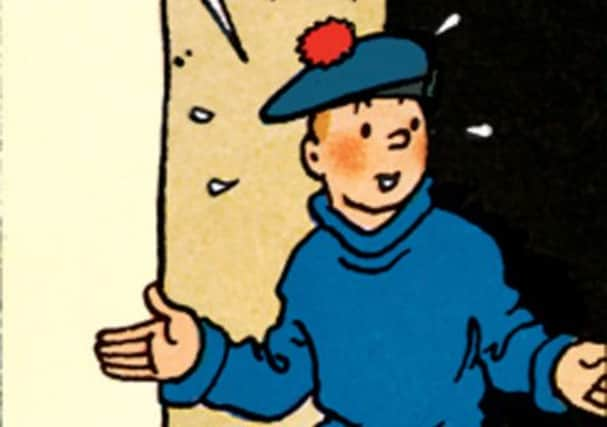Tintin editions to be released in Scots and Gaelic


New editions of the treasured cartoon series are to be released in both Scots and Gaelic. Publishers say they are anticipating significant interest from schools and collectors.
The first adventure to be translated is The Black Island, known as LÎle Noire in French – chosen as it is set partly in Scotland.
Advertisement
Hide AdEntitled in the new languages as The Derk Isle and An t-Eilean Dubh, the new editions were launched on Skye last night. The work follows Tintin and his beloved dog Snowy’s hunt for a gang of counterfeiters.
Publishers Taigh na Teud said the Gaelic edition, translated by Gillibride MacMillan, will allow children and adults to enjoy Tintin in their own language, while it is hoped the Scots version, by Dr Susan Rennie, will lead to greater interest in the dialect.
As has become tradition in countries across the globe, translators can adapt the names of characters and dialogue to reflect local customs and humour, but without altering Hergé’s adventure tales.
Tintin – who appears as Kuifje in Dutch and Tim in German – keeps his name, but Snowy becomes Tarrie, the Scots for terrier, while detectives Thomson and Thompson are known as Nisbet and Nesbit.
Dr Rennie, research fellow at the University of Glasgow, who translated the book from its original French into Scots said the language was well suited to the upbeat adventures of the quiffed roving reporter.
She said: “It’s a fantastic opportunity to be able to translate a world-famous character like Tintin into Scots. The Scots language is so wonderfully suited to Tintin’s adventures and there are so many words and phrases that lend themselves to the story that it really was a lot of fun.”
Advertisement
Hide AdDr Rennie told The Scotsman she enjoyed the translating but encountered several pitfalls along the way.
She said: “There can be slight problems which you might not imagine but which readers could pick up on. For example, we named Thomson and Thompson, Nisbet and Nesbit as they are good Scottish names and it adds to the confusion as to who is who.
Advertisement
Hide Ad“However, one actually has a slightly different moustache so you have to keep track of which is which. It can be a minefield, but a fun minefield, if that makes sense.”
Christine Martin, from Taigh na Teud, added: “We wanted make this available for people who want to read in their own language and we are hoping these will be used in school. We are actually hoping to have the books feature during the upcoming school conference on literature.”
Ms Martin said there were pitfalls for both translators.
She said: “Obviously the speech bubbles can’t change in size even though some words or phrases might be longer, so we have to work within the constraints of that, but we’re very proud of the final version.”
Ronnie Black, The Scotsman’s Gaelic editor, said: “It’s good news that Tintin is being translated into Gaelic.
“Gaelic-medium primary education is expanding exponentially and this is exactly the sort of level where initiatives are most needed – an excellent symptom that Gaelic is on the march.”
Both editions are on sale at Paper Tiger and Blackwell’s in Edinburgh, and The Gaelic Books Council shop and Blackwell’s in Glasgow.